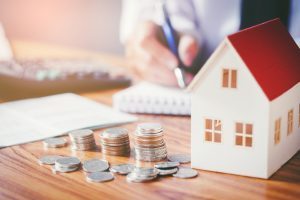 Consumer credit increased by 5% in Q2 2019 according to the Federal Reserve's latest G.19 report [1]. The data indicated a rise in both revolving as well as nonrevolving credit. While revolving credit rose at an annual rate of 5-1/4%, nonrevolving credit increased at an annual rate of 4-3/4%.
Consumer credit increased by 5% in Q2 2019 according to the Federal Reserve's latest G.19 report [1]. The data indicated a rise in both revolving as well as nonrevolving credit. While revolving credit rose at an annual rate of 5-1/4%, nonrevolving credit increased at an annual rate of 4-3/4%.
As of June 30, the Fed report indicated that consumer credit totaled $4.1 trillion, with $1.1 trillion in revolving debt and $3 trillion in nonrevolving debt.
According to an analysis of the report by the National Association of Home Builders [2] (NAHB), consumer credit increased by $15 billion month-over-month. In June, consumer credit increased at a seasonally adjusted annual rate of 4%.
In what could impact home equity lines of credit (HELOCs) moving forward, revolving credit greatly decelerated and was virtually unchanged from the previous month, decreasing by $80 million, while nonrevolving credit increased by $15 billion at an annual rate of 6%.
While revolving credit plans are largely composed of credit card debt, they also include HELOCs and might be secured or unsecured by collateral and allow a consumer to borrow up to a prearranged limit and repay the debt in one or more installments, the NAHB analysis explained
The analysis [3] additionally revealed that total student debt, a component of nonrevolving credit, stood at $1.6 trillion by the end of Q2 2019. Out of this total, $6 billion was added between March and June.
Student debt has been steadily increasing since prior to the Great Recession and remains one of the main obstacles to homeownership by younger demographics. Earlier this year, NAHB had reported that while student debt has increased, credit lending standards have become more stringent after the Great Recession, thus providing another impact on homeownership.
Additionally, the study had found that since student-loan debt historically made up the majority of nonmortgage, nonrevolving credit, "homeownership is the opportunity cost for its accumulation."